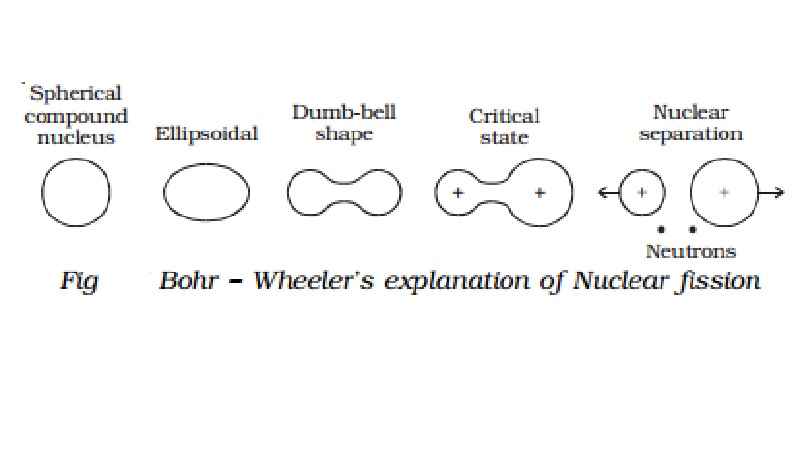Chapter: 11th 12th std standard Class Physics sciense Higher secondary school College Notes
Energy released in Nuclear fission

Nuclear fission
In 1939, German scientists Otto Hahn and F.
Strassman discovered that when uranium nucleus is bombarded with a neutron, it
breaks up into two fragments of comparable masses with the release of energy.
The process of breaking up of the nucleus of a heavier atom into
two fragments with the release of large amount of energy is called nuclear
fission. The fission is accompanied of the release of neutrons. The fission
reactions with 92U235 are represented as
92U235 + 0n1 → 56Ba141
+ 36Kr92 + 3 0n1 + Q ………. (1)
92U235 + 0n1 → 54Xe140
+ 38Sr94 + 2 0n1 + Q ...(2)
In the above examples the fission reaction is
taking place with the release of 3 neutrons and 2 neutrons. On an average 2.5
neutrons per fission are actually released. Of the many possible fission
reactions of 92U235, the reaction given in equation (1)
is the most favourable.
Energy released in fission
Let
us calculate the
amount of energy
released during the fission
of 92U235 with a neutron. The fission reaction is
92U235
+ 0n1 → 56Ba141 + 36Kr92
+ 30n1 + Q
Mass of 92U235
= 235.045733 amu
Mass of 0n1 = 1.008665
amu
Total mass of the reactant = 236.054398 amu
Mass of 56Ba141 =
140.9177 amu
Mass of 36Kr92 = 91.8854
amu
Mass of 3 neutrons = 3.025995 amu
(3 × 1.008665)
Total mass of the products = 235.829095 amu
∴ Mass defect = 236.054398 - 235.829095 = 0.225303 amu
As, 1 amu = 931 MeV, energy released in a
fission =
0.225303 × 931 = 200 MeV
Niels Bohr and John A. Wheeler explained the
nuclear fission process with the help of liquid drop model. A liquid drop has a
spherical shape due to surface tension. On applying external force the sphere
changes into ellipsoid, which may change into a dumb bell shape when the force
is larger. This may break at the narrow end into two portions.

In the same way, when the heavier nucleus absorbs a neutron, a
compound nucleus is formed and is left in an excited state. The excitation
energy sets up a series of rapid oscillations. The compound nucleus undergoes
distortion from spherical to dumb bell shape. Each portion of the dumb bell has
a positive charge and one repels the other. This results in fission and the
formation of fission fragments (Fig).
Related Topics